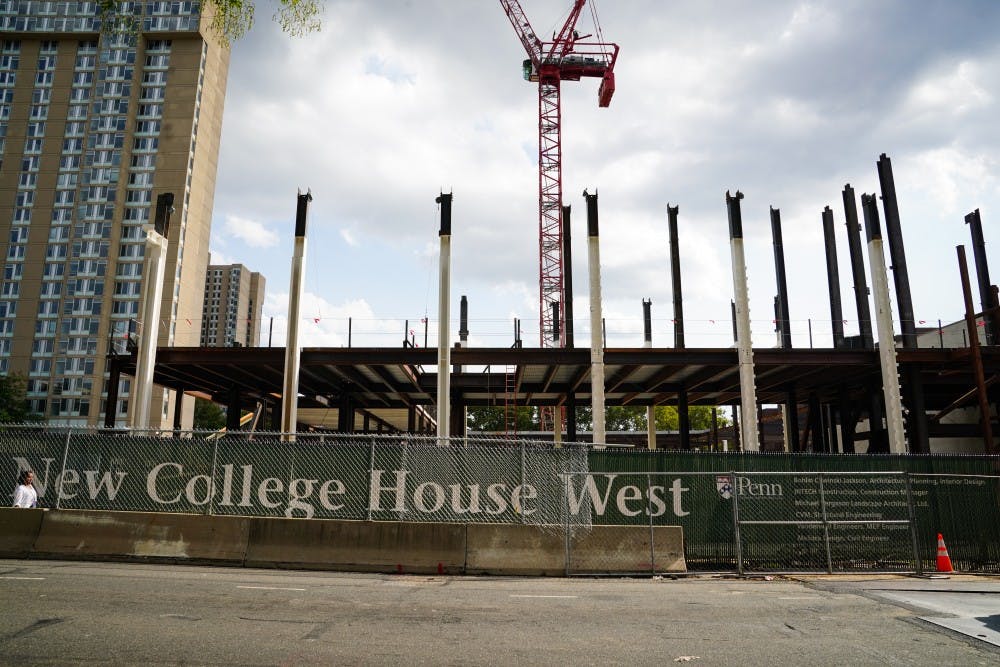Recent studies have uncovered a nationwide trend of college campuses constructing and renovating buildings in order to attain the ultimate high-tech facilities, despite growing stress on their financial budgets. Penn, with its four large construction projects — the Penn Museum, the Penn Medicine Pavilion, the Wharton Academic Research Building, and most infamously, New College House West, fits right into this trend.
New academic buildings are one thing, but Penn’s decision to build another residence hall specifically to support its latest policy mandating that all sophomores live on campus starting in 2021 — with little student input about either the construction or the policy itself — is quite another, and simply outrageous.
Not only does the new residence hall’s location — immediately abutting Rodin College House — obstruct many Rodin residents’ views of West Philadelphia, but its early and long construction hours of 7 a.m. to 4:30 p.m., Monday-Saturday, are extremely disruptive, especially given how sleep-deprived most students already are.
And Rodin residents aren’t the only people disadvantaged by this construction. For some students, simply seeing the gray construction site is a mood dampener. This point is only magnified by the fact that, in order to begin constructing NCHW, Penn had to tear down high rise field — one of Penn’s few and diminishing green spaces. What differentiates Penn from other city campuses is its beautiful, albeit limited, bucolic areas, and the dismantling of high rise field makes crystal clear the lack of importance Penn places on being a green campus.
While University architects claim that they are “optimistic about preserving green space on campus and improving the quality of open space available to the Penn community,” they have also admitted that not only will the anticipated amount of open green space be reduced to one-half or even one-third of what it was before, but the green space will be artificial turf, as opposed to regular grass, which is significantly less eco-friendly.
The University architects’ promise to preserve some of the green space that has been destroyed is further suspect, as the details behind that promise consist primarily of building a courtyard. This does nothing for the majority of the Penn community, for whom entering the building just to attain green space would be an inconvenience. And Penn’s frequent visitors, who cannot access the building’s interior at all, will reap no benefit whatsoever.
Penn prides itself on having an open campus and purportedly maintaining a positive relationship with the surrounding West Philadelphia community, having even coined the slogan “be a good neighbor.” Yet tearing down the space that allows local children the opportunity to play and enjoy the campus that they might hope to one day attend — after, of course, overcoming the overwhelming barriers of Philadelphia’s inadequate public schools and housing units that are a direct result of the city’s investment in the University at the expense of its surrounding community, or “Penntrification” — doesn’t seem very neighborly.
Penn needs to take a step back from its competition for the most high-tech buildings, and instead prioritize its students’ needs. After all, the students are the ones who pay to attend this institution, and it’s only fair that we have at least some say in what goes on at it.
SEE MORE FROM HADRIANA LOWENKRON:
Volunteering this summer isn't financially sustainable for everyone
Where students live should not be determined by the administration, especially not under the misguided justification that forcing students to live on campus for a second year will “strengthen the sense of community among … first- and second-year students [by] promoting students’ achievement and well-being, [and] enhancing support for students’ academic and social lives.” Nor should students who the University claims will benefit from the construction be punished by a tuition increase — especially if the students are, for the most part, excluded from the related decision-making processes.
As more and more students are prevented from attending this school due to it being unaffordable, Penn must ask itself: who is this construction really benefiting?

HADRIANA LOWENKRON is a College sophomore studying Urban Studies and Journalism. Her email address is lowenkron@thedp.com.
SEE MORE FROM HADRIANA LOWENKRON:
Volunteering this summer isn't financially sustainable for everyone









